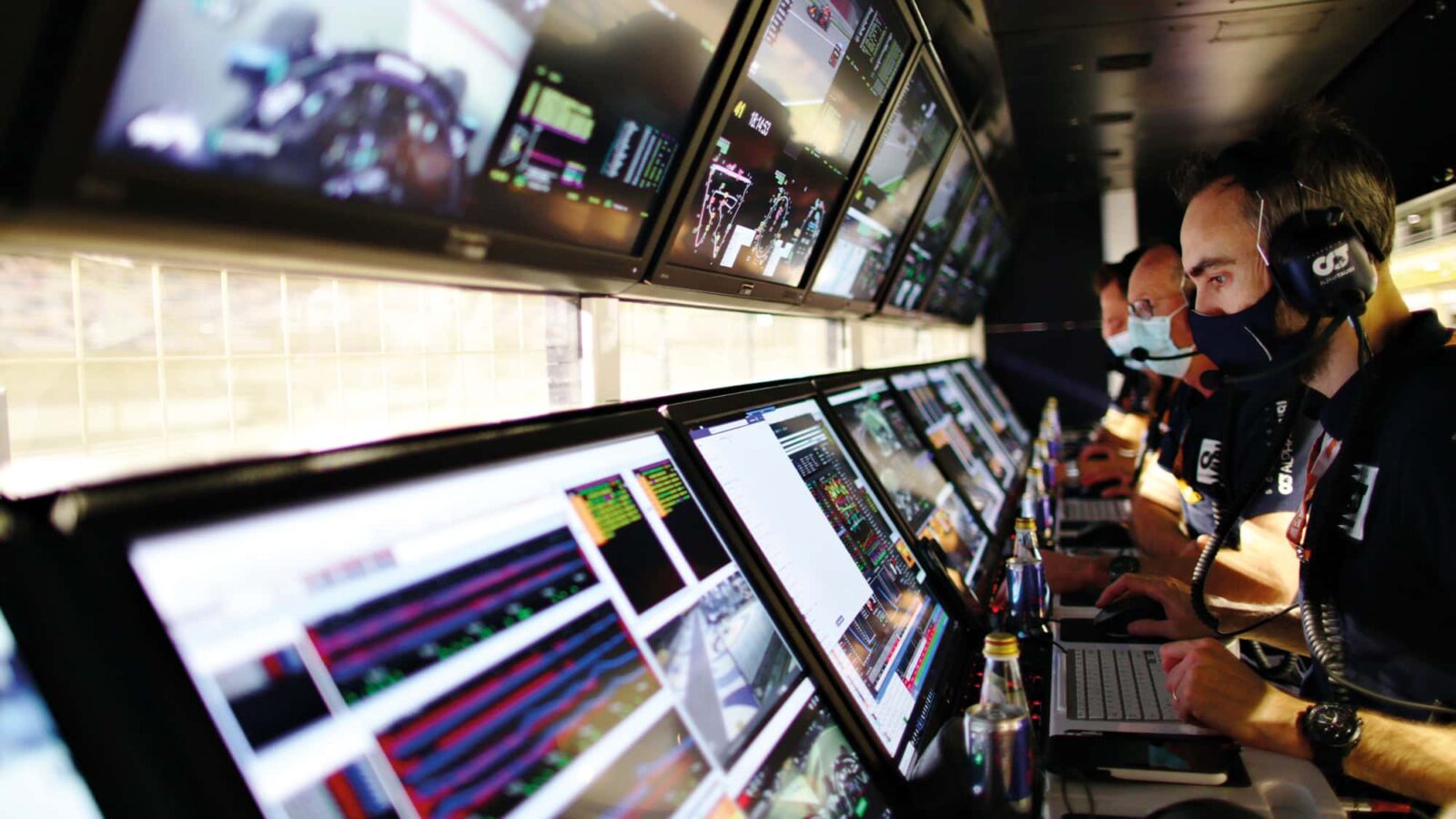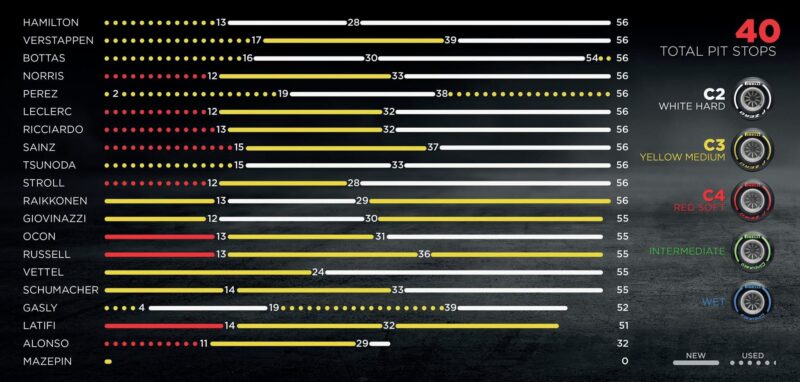Mercedes treads carefully on tyre strategy
Tyre choice was Lewis’s winning formula, reports Mark Hughes

Mercedes overcame a faster Red Bull on race day in Bahrain through a bold early stopping strategy which vaulted Lewis Hamilton ahead of early leader and pole-sitter Max Verstappen.
Making the first of two stops from 1.8sec behind Verstappen on the 13th lap of 56 gave Hamilton track position. The high degradation rate of the tyres around the notoriously tough track meant Hamilton could go much faster on his out-lap than Verstappen on his old tyres could have gone on his in-lap if Red Bull had even tried to respond by pitting a lap later. But it defined Hamilton’s remaining stints as long ones.
The best way for Red Bull to counter that was to leave Verstappen out for more ideally spaced stints, which would put him on much newer and faster tyres with which to attack Hamilton in the final stint.
Mercedes pitted Hamilton as soon as there was a space in traffic to drop him into after the 23sec pitstop time loss. The required gap was created in the mid-field by Alpine bringing in Fernando Alonso in an undercut attempt on Lance Stroll and Aston Martin responding with Stroll on the next lap. Why didn’t Red Bull pit as soon as that gap was there? If it had done that, Mercedes would have left Hamilton out and attempted the more evenly spaced stints so as to have a tyre advantage at the end.
Another factor erring Red Bull away from the early first stop was it had only one new set of hard tyres (and one set of mediums) left. Mercedes had two new sets of hards waiting for Hamilton. The hard was a better race tyre than the medium, faster over a stint and more durable. It was capable of longer stints. Trying to do the remaining 43 laps on two sets of hards was going to be difficult enough. Trying to do it on one set of hards and a set of mediums with a range five laps fewer would have been extra challenging.
Mercedes was in this position because it had planned its whole run plan through the practices this way. Knowing it was slower than Red Bull, the strategy team worked backwards from gaining track position by the earliest possible first stop. Each car is allocated eight sets of softs, three sets of mediums and two sets of hards for the whole weekend. To have two sets of hards available in the race meant not using them in practice at all. Like Red Bull, it planned on getting through Q2 on the medium so as to allow it to start the race on that tyre, rather than the less durable (but faster over a lap) soft.
This obliged Mercedes to do much of its practice on the soft tyre which it wouldn’t be running in the race, leaving Hamilton with only three sets of softs going into qualifying, two of which would ideally be needed in Q3 to maximise grid position, the other to get through Q1 (so as not to use up the mediums reserved for Q2). It involved some risk as it made them vulnerable to a yellow flag or other problem in Q1 and not having enough softs left to do the preferred two runs on them in Q3, something to which Valtteri Bottas fell foul.
For Hamilton the plan worked brilliantly, though it did require a drive of extreme patience and control – and for Verstappen’s overtake attempt to prove optimistic. The root to victory though originated in that very committed tyre run plan right from the moment the wheels began turning on Friday.

Maximum time on faster hard tyres was studiously planned by Mercedes and helped give Lewis Hamilton the edge he needed over Max Verstappen

